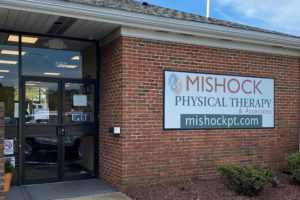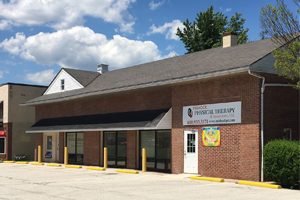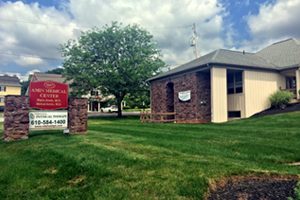Prevention Programs
Mishock Physical Therapy & Associates has 3 basic Prevention Programs: Balance & Fall Prevention, ACL Tear Prevention/Sports Performance Improvement, and Dynamic Stretching.
Balance & Fall
Each year 2 million seniors are treated in the E.R. for fall-related injuries. Falls = injury, decreased independent function, premature admission to nursing homes, and even early death. If you have a tendency to fall or believe you may be in danger of falling for any reason, please don’t hesitate to contact any of our offices and ask to schedule your evaluation.
ACL Tear Prevention/ Sports Performance Improvement
Are you an athlete (or do you know an athlete) looking to improve sports performance or prevent an injury? Mishock Physical Therapy can help you INCREASE SPEED, AGILITY, & ENDURANCE while helping to prevent major injury. Knee and lower extremity injuries are not only painful and disappointing, but also expensive! Your goal and our goal is to keep you in the game! Call us today to learn more about this program. Improve explosive power for soccer, baseball, football, lacrosse, tennis, track & field, field hockey, and more.
Dynamic Stretching
The type of stretching that an athlete does prior to an athletic endeavor is important to improving performance and preventing injury. Static stretching (the traditional 30 second hold variety) has long been the standard activity performed prior to athletic events. However, more current research has demonstrated that dynamic stretching may be the better way to prepare the athlete for competition.
Static stretching prior to an activity may actually have adverse effects, such as calming the athlete, decreasing blood flow, and reducing overall strength output. Furthermore, there is a neuromuscular inhibitory response to static stretching. The stretched muscle becomes less responsive and stays weakened for up to 30-60 minutes after stretching, which is not how an athlete wants to begin competition. The muscle is then actually weaker and may be more vulnerable to injury.
Conversely, research has shown that dynamic stretching, a rhythmic, smooth, continuous series of movements that stretches many joints of the body in functional patterns, can increase power, flexibility, and range-of-motion. Unlike static stretching, dynamic stretching does not cause the inhibitory response to the nervous system. Beyond this, dynamic stretching will increase heart and respiratory rates, allowing the athlete to be better prepared for activity. Dynamic stretching also primes the body for more intense activity to come.
A study comparing hamstring strength production during a leg curl exercise performed after both static and dynamic stretching revealed significant differences in strength output. Results showed that static stretching produced a significant reduction in hamstring strength for a time period lasting up to one hour post-stretching. Dynamic stretching, however, resulted in significantly higher muscle temperature and increased muscle flexibility. This study supports the use of dynamic flexibility prior to a competition or training session and suggests that static stretching should be used as a post-workout cool down (Journal of Strength and Conditioning Research, 2005).
THE RIGHT WARM-UP should accomplish two things: loosen muscles and tendons to increase the range of motion of various joints and, literally, warm up the body. When muscles are at rest, there is less blood flow to muscles and tendons and they stiffen. A well-designed warm-up starts by increasing body heat and blood flow. Warm muscles and dilated blood vessels pull oxygen from the bloodstream more efficiently and use stored muscle fuel more effectively.
Even golfers, notoriously nonchalant about warming up, would benefit from exerting themselves a bit before teeing off. A recent survey of 304 recreational golfers found that two-thirds seldom or never bother to warm up prior to golf. In one 2004 study, golfers who did dynamic warm- up exercises and practice swings increased their club-head speed and were projected to have dropped their handicap by seven strokes over seven weeks. And new research out of Bloomsburg University in Pennsylvania, suggests that those who warm up are nine times less likely to be injured.
The optimal way to warm-up (and stretch) prior to an athletic event is to start with a few minutes of low intensity aerobic exercise (walking or jogging) around the court or field. Follow this by performing dynamic stretches. Thirty seconds to one minute of the following: walking lunges, body weight squats, high knee hugs, lateral lunge walks, straight leg marching, quad walks, and arm circles. Static stretching can be simply moved to end of the workout. Don’t trash it altogether because the inhibitory effect on the nervous system can be beneficial to elongate tight muscles, reduce soreness, and speed recovery.
Our PT Evaluation + The Right Exercise Program + Patient Education = Minimized Risk
Mishock Physical Therapy Provides Prevention Programs at the Following Locations:

Mishock Physical Therapy
Boyertown
Ph: (610) 845-5000
Fx: 610.845.5011
560 North Route 100
Bechtelsville, PA 19505

Mishock Physical Therapy
Gilbertsville
ph: (610) 327-2600
fx: (610) 327-9050
1806 Swamp Pike
Suite 100
Gilbertsville, PA 19525
Mishock Physical Therapy
Limerick
ph: (484) 948-2800
fx: (610) 792-3044
Freedom Valley YMCA at Spring Valley
19 W. Linfield-Trappe Rd.
Limerick, PA 19468
Mishock Physical Therapy
Phoenixville
ph: (610) 933-3371
fx: (610) 933-3376
131 Nutt Road
Phoenixville, PA 19460
Mishock Physical Therapy
Skippack
ph: (610) 584-1400
fx: (610) 584-5224
3887 Skippack Pike
Lower Level
Skippack, PA 19474



